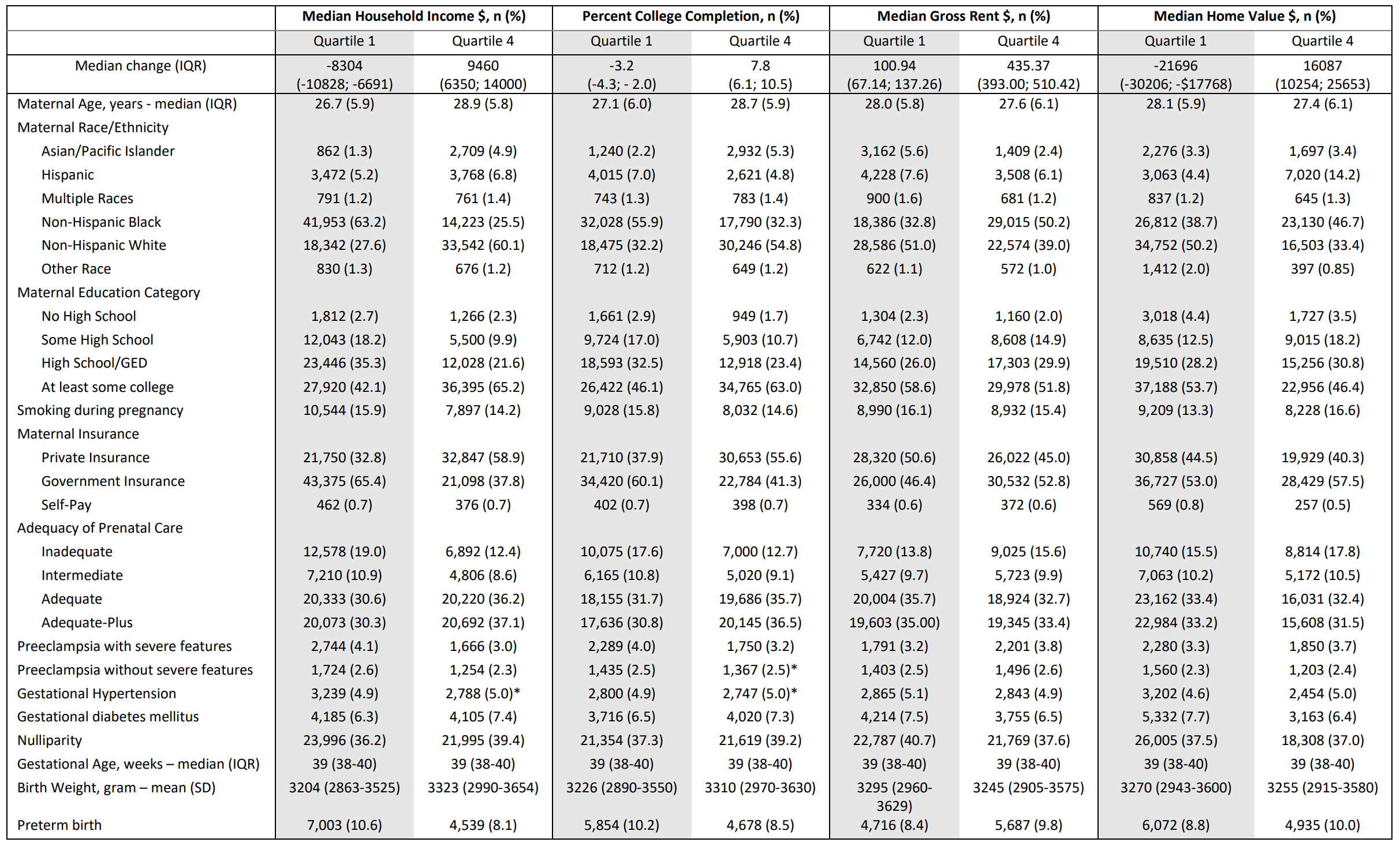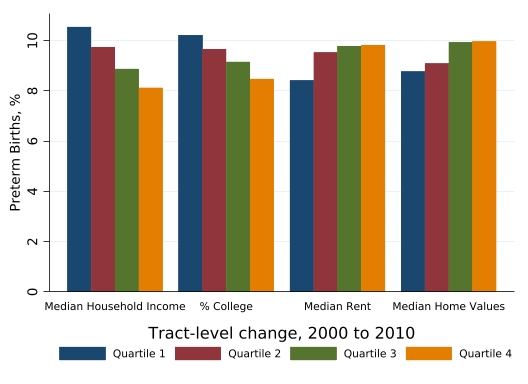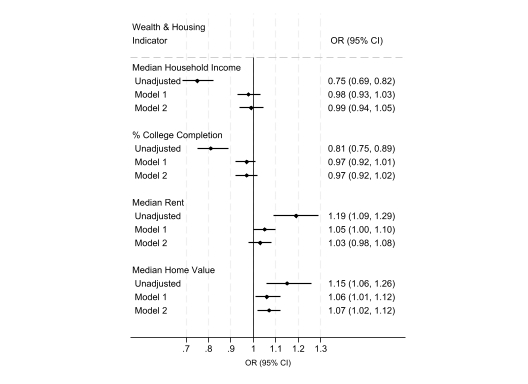Neonatology
Session: Neo-Perinatal Health Care Delivery 1: Epidemiology/Health Services Research
313 - Change in housing affordability is associated with preterm birth in Detroit, Michigan
Saturday, May 4, 2024
3:30 PM - 6:00 PM ET
Poster Number: 313
Publication Number: 313.1442
Publication Number: 313.1442

Daria Murosko, MD MPH (she/her/hers)
Neonatologist, Research Trainee
Childrens Hospital of Philadelphia
Philadelphia, Pennsylvania, United States
Presenting Author(s)
Background: Though neighborhood structural inequalities are associated with preterm birth (PTB, birth < 37 weeks gestational age), these studies cannot account for change in neighborhood exposures over time. Gentrification, a pattern of neighborhood change characterized by increasing affluence, is a composite measure of changes in indicators of wealth and housing costs over a specific time interval. Despite evidence linking gentrification with poor health in adults, investigations of its association with PTB are largely null, which may be due to differing relationships between birth outcomes and the indicators used in the composite index.
Objective: To determine the association of gentrification components, neighborhood-level change in wealth and housing, with PTB.
Design/Methods: This retrospective analysis merged a cohort of all singleton births in Wayne County, Michigan (2010 – 2020) with census tract Census and American Community Survey data. The exposure was the change in community-level wealth (median household income (MHI), percent college completion) and housing indicators (median rent, median home value) from 2000 to 2010. Multivariate logistic regression determined the association of quartiles of indicator change and PTB, clustered at the census tract, adjusted for maternal demographic and health factors.
Results: Of 240,725 births, 22,611 (9.4%) were PTB. Maternal and infant characteristics differed between the quartiles with the least and most change for all wealth and housing indicators (Table 1). PTB rates decreased with greater positive change in MHI and college completion but increased with greater change in median rent and home values (Figure 1). In unadjusted models, odds of PTB were 25% and 19% lower in tracts in the top quartile increase in MHI and college completion, respectively, compared to births in tracts with the least amount of change. However, odds of PTB were increased 19% and 15% in tracts in the top quartile increase in rent and home values, respectively (Figure 2). When all indicators were added to the model, these trends persisted. In adjusted models, odds of PTB remained elevated in census tracts where rent increased the most.
Conclusion(s): Indicators of community-level change in wealth and housing affordability have opposing associations with PTB, indicating that infant health outcomes may not have a typical association with gentrification as it is commonly defined. The association between increased housing costs and PTB may be due to both heightened individual experience of stress and neighborhood-level shifts in resident demographics and resources over time.



